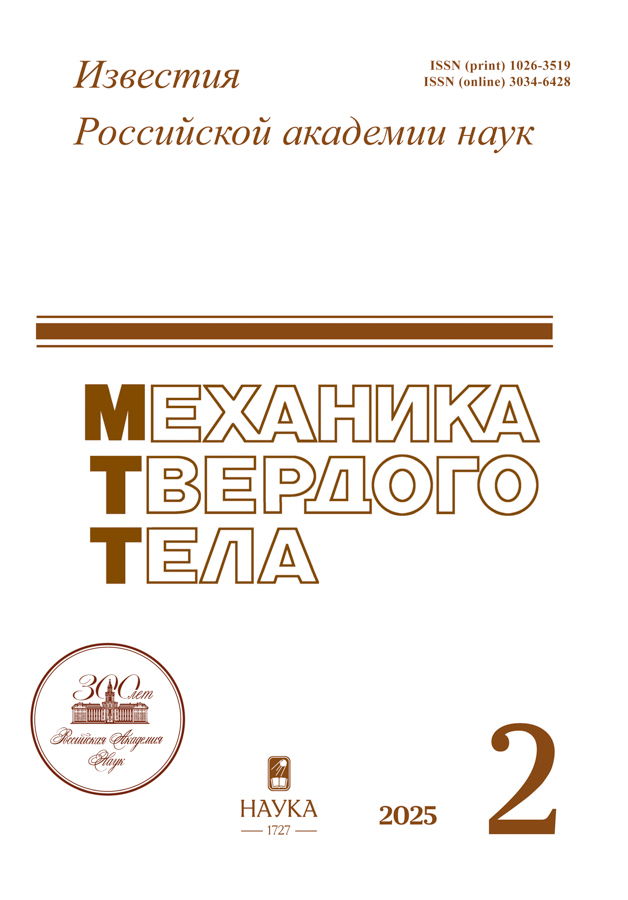On various functions called entropy when using classical mechanics
- Autores: Shmatkov A.M.1
-
Afiliações:
- Institute for Problems in Mechanics, RAS
- Edição: Nº 2 (2025)
- Páginas: 83-95
- Seção: Articles
- URL: https://cardiosomatics.ru/1026-3519/article/view/686208
- DOI: https://doi.org/10.31857/S1026351925020057
- EDN: https://elibrary.ru/anchth
- ID: 686208
Citar
Texto integral
Resumo
Thermodynamic entropy and four different functions used to describe it within mechanical models are considered. It is shown that all four variants have properties that differ significantly from the properties of entropy introduced in thermodynamics based on experimental data. It is established that, in order to comply with the approaches used in thermodynamics, the widely used mechanical model of a rarefied gas should consider almost exclusively processes that assume the presence of external forces acting on the system. It is noted that such a requirement allows a new approach to the use of mechanical models for studying irreversible physical phenomena.
Palavras-chave
Texto integral
Sobre autores
A. Shmatkov
Institute for Problems in Mechanics, RAS
Autor responsável pela correspondência
Email: shmatkov@ipmnet.ru
Rússia, Moscow
Bibliografia
- Katok A., Hasselblatt B. Introduction to the Modern Theory of Dynamical Systems. Cambridge: Cambridge University Press, 1996. 824 p.
- Poincaré A. Réflexions sur la théorie cinétique des gaz // Journal de Physique Théorique et Appliquée. 1906. V. 5. № 1. P. 369–403.
- Lifshitz E.M., Pitaevskii L.P. Physical Kinetics. Oxford: Butterworth-Heinemann, 1981. 452 p.
- Kozlov V.V. Thermal equilibrium according to Gibbs and Poincare. Moscow-Izhevsk: Izhevsk Institute of Computer Science, 2002. 320 p. (in Russian)
- Sivukhin D.V. A General Course in Physics. Thermodynamics and Molecular Physics. M.: Fizmatlit, 2005. 544 p. (in Russian)
- Landau L.D., Lifshitz E.M. Statistical Physics, 3rd Edition, Part 1. Oxford: Butterworth-Heinemann, 1980. 564 p.
- Markeev A.P. Theoretical mechanics. M.: CHeRo, 1999. 572 p. (in Russian)
- Shmatkov A.M. The thermodynamic irreversibility of a mechanical system possessing the property of recurrence // JAMM. 2014. V. 78. № 3. P. 264–266.
- Shmatkov A.M. On reaching the maximum entropy in mechanical systems // Journal of Engineering Physics and Thermophysics. 2023. V. 96. № 2. P. 542–545.
- Khinchin A.Ya. The concept of entropy in the theory of probability // Uspekhi Mat. Nauk. 1953. V. 8. № 3 (55). P. 3–20. (in Russian)
- Faddeev D.K. On the concept of entropy of a finite probabilistic scheme // Uspekhi Mat. Nauk. 1956. V. 11. № 1 (67). P. 227–231. (in Russian)
- Ter-Krikorov A.M., Shabunin M.I. A course of mathematical analysis. M.: Nauka, 1988. 816 p. (in Russian)
- Ventzel E.S., Ovcharov L.A. Probability theory and its engineering applications. M.: Higher School, 2000. 480 p. (in Russian)
- Shmatkov A.M. A Feature in Deriving the Gibbs Distribution from the Entropy Maximum Principle // Moscow University Mechanics Bulletin. 2017. V. 72. № 5. P. 126–127.
Arquivos suplementares










